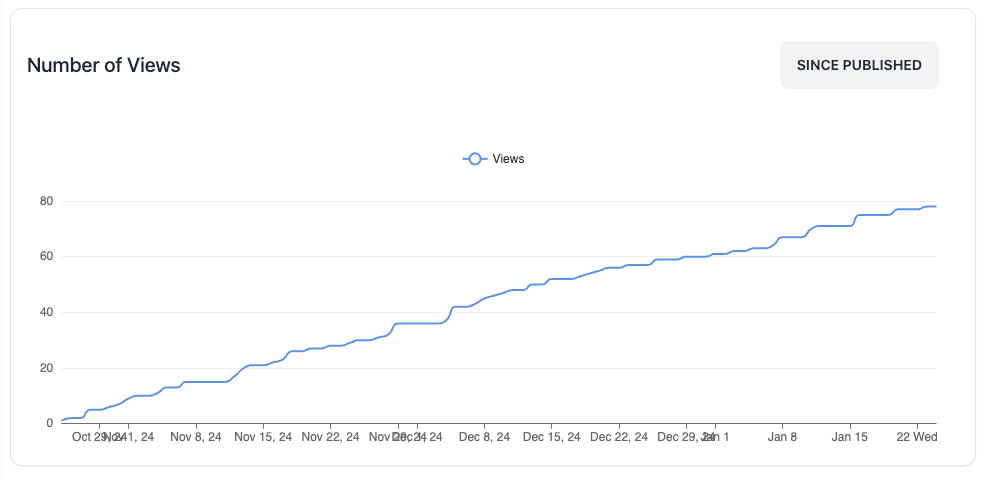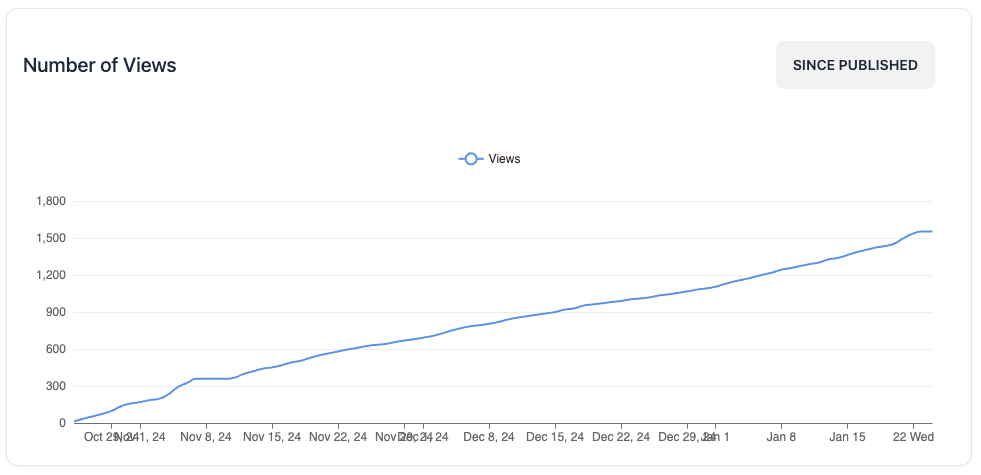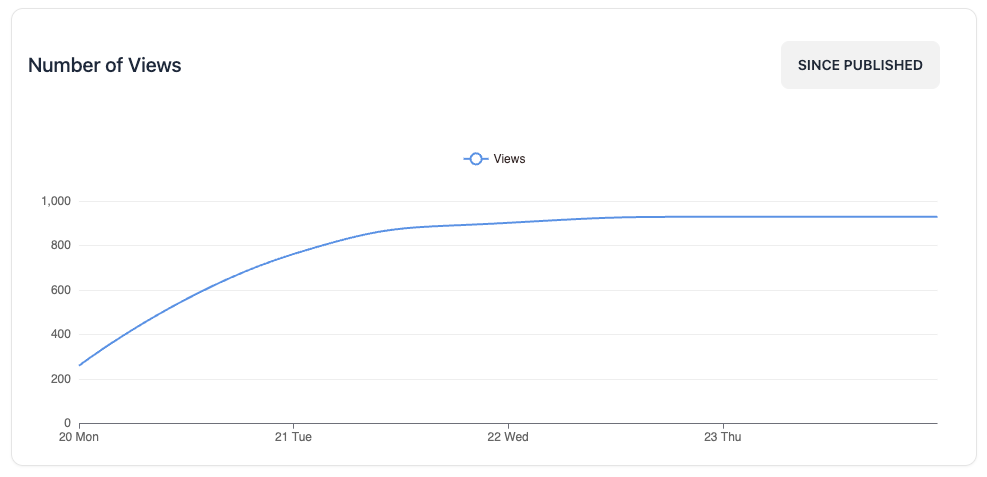Blog Analytics Metrics That Really Matter: Beyond Pageviews
Traditional blog analytics focus on surface-level metrics. Pageviews count visits but ignore engagement. Time on page includes inactive tabs. Bounce rates penalize satisfied readers. Modern bloggers need deeper insights to understand their content's real impact.
Bloggers needs to change their approach to analytics. Understanding reading patterns, engagement signals, and content outliers can transform how you grow your blog. By connecting these data points, you can create content that truly resonates with your audience and drives meaningful engagement.
The Problem with Traditional Analytics
Here is the traditional approach to blog analytics:
- Pageviews: The number of times a page is loaded.
- Bounce Rate: The percentage of single-page visits.
- Time on Page: The average time spent on a page.
- Traffic Sources: Where your visitors come from.
- Conversion Rate: The percentage of visitors who take a specific action.
There is plenty of value in these metrics, especially for sales-driven websites, e-commerce stores, or landing pages.
But for bloggers, it's not enough.
- Pageviews can be inflated by bots.
- Bounce rates don't account for satisfied readers.
- Time on page includes inactive tabs.
- Traffic sources don't reveal engagement.
- Conversion rates is not relevant for all blogs.
Understanding Real Engagement
On a blog, you want to know if your content is actually being read, understood, and appreciated.
The first step is understanding reading patterns. How long do readers spend on your page?
For instance, this article has a constant number of page views over time:

But look at the reading time:

It tells a different story. Readers are skimming the content, not engaging with it. Having a high number of page views is great, but if readers aren't spending time with your content, it's not making an impact.
And it's the same story, whether you have an enterprise blog or a personal blog.
Perhaps the introduction isn't compelling enough, or the content doesn't match what readers expected.
But reading is just the beginning. Real engagement happens when readers take action.
- A thoughtful comment shows that your content sparked a reaction.
- A newsletter subscription indicates trust in your expertise.
- A like or upvote means your content resonated with the reader.
- A social share means your content was valuable enough to stake their reputation on.
- A click on a link within the article shows that your content inspired action.
Each of these actions carries weight. They're not just vanity metrics – they're signs that your content is making an impact.
Discovering Your Content outliers
Every blog has them: those special posts that significantly outperform the rest.
They generate more engagement, attract more subscribers, and keep bringing value long after publication.
We call these content outliers, and identifying them is crucial for blog growth.
What makes these posts special isn't always obvious. Sometimes it's the topic. Sometimes it's the format. Sometimes it's the timing. But by analyzing both reading patterns and engagement signals, patterns emerge:
Articles that maintain high reader attention throughout their length often generate more newsletter subscriptions. Posts that spark lots of comments tend to see more social shares. Content that answers a specific pain point often becomes evergreen, bringing steady traffic months after publication.
Identifying Content That Lasts
Not all successful content follows the same pattern. An article might gather a burst of initial views but quickly fade into obscurity. Another could start slowly but steadily attract readers month after month. These different trajectories tell us important stories about our content's value.
Consider those two articles :

this page shows a steady upward trend - each day brings new readers who find it through search engines or recommendations. It's what we call "evergreen content" - always relevant, always valuable.

In contrast, this article peaked in its first week but plateaued shortly after. While it served its purpose of keeping the audience informed, its value was time-sensitive.
This pattern repeats across successful blogs. Timely content drives short-term traffic and keeps your blog feeling current. But it's the evergreen, search-optimized content that builds your foundation. These articles often share characteristics: Timely Content:
- Newsy titles ("Just Announced", "Breaking", "New Release")
- Current events or trends
- Quick initial surge, then silence
Evergreen Content:
- Problem-solving titles ("How to", "Guide to", "Understanding")
- Fundamental topics in your niche
- Slow start, consistent growth
Understanding these patterns helps you balance your content strategy. Timely pieces keep your blog dynamic and your audience engaged. But investing in well-researched, comprehensive content creates the backbone of sustainable blog growth. The key is not choosing one over the other, but understanding how each type contributes to your blog's success.
The Power of Connected Analytics
Here's what we've learned: no single metric tells the whole story. Understanding blog performance requires connecting multiple data points. How do reading patterns correlate with engagement actions? Which topics consistently drive newsletter growth? What content formats keep readers coming back?
This holistic view transforms analytics from a simple traffic counter into a powerful tool for growth. It helps you:
- Create content that truly resonates with your audience
- Build stronger connections with your readers
- Make informed decisions about your blog's direction
Moving Forward
The future of blog analytics isn't about counting more things – it's about measuring what matters. It's about understanding not just how many people visit your blog, but how they interact with your content and what value they get from it.
This is why we built Pulse as the foundation of BlogTally. Because we believe every blogger deserves to know not just how many people visit their blog, but how many people their blog actually helps.
Written by Hugo
I'm a professional web developer, author of Blogtally.



